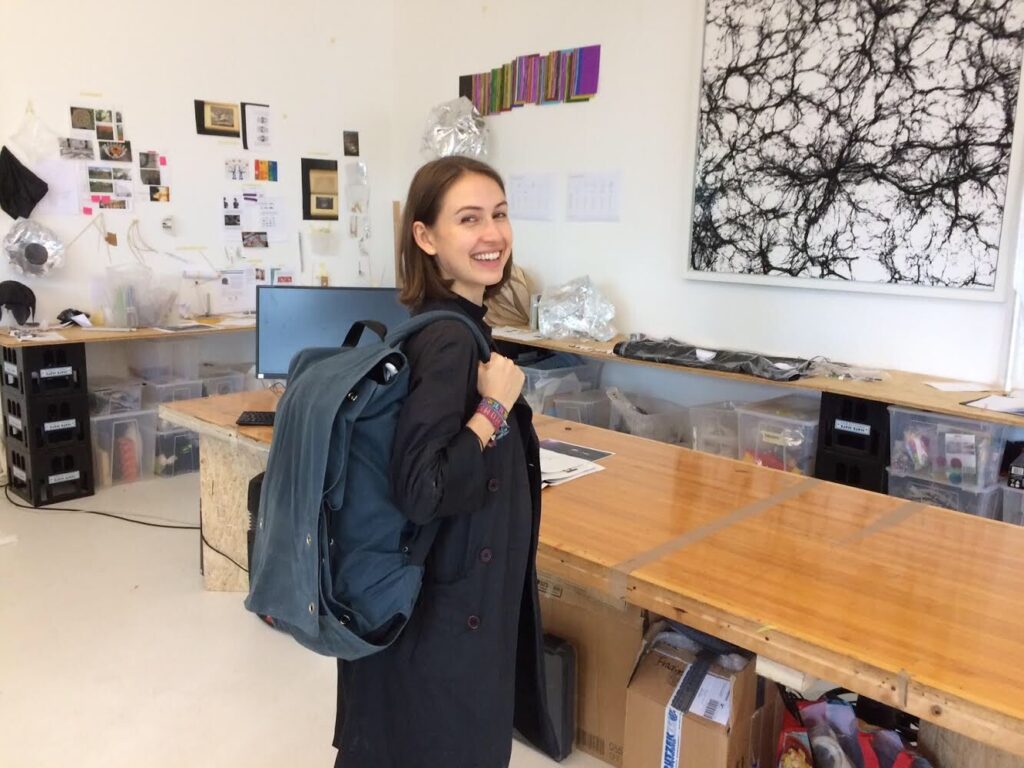At the end of 2017, a meeting was held with the participation of Débora Swistun, Tomás Saraceno, Joaquín Ezcurra and several members of the Aerocene community in Argentina.

It was a night of brainstorming to think and imagine how an art and science project like Aerocene could help communities exposed to the impacts of fossil fuels, in places like the Matanza-Riachuelo river basin, or the Reconquista river basin.

Débora was born in the Porst neighborhood of the so-called Villa Inflamable, has a PhD in Anthropology (Universidad Nacional de San Martín, UNSAM), a Master’s degree in International Cooperation and Urban Development Sciences from the Institut d’Urbanisme de Grenoble and the Technische Universität Darmstadt, and teaches Environmental Sciences at the Universidad Nacional de Avellaneda (UNDAV). Through her training and research and management experience in Europe, North Africa and Latin America she has specialised in knowledge co-production and public policy, urban spaces, health and environmental risk and transitions to sustainability. She has published in different international journals and her book “Inflamable, Study of Environmental Suffering” (Ed. Paidós, 2008; OUP, 2009); which reveals and analyses the experience of living in environmental risk in the Petrochemical Pole of Dock Sud has won four international awards and inspired several interventions in the Matanza-Riachuelo river basin (Buenos Aires).

Aerocene is an interdisciplinary artistic endeavour that seeks to generate new modes of sensibility, reactivating a common imaginary to achieve an ethical collaboration with the atmosphere and the environment. Its artivism is manifested in the testing and circulation of lighter-than-air sculptures that float in the air with the heat of the Sun and the infrared radiation of the Earth’s surface, challenging us to think about other forms of human mobility independent of fossil fuels, and non-polluting.
Débora suggested that one way to “ground” the Aerocene project in a local context in Argentina would be to contribute to an awareness-raising campaign in Villa Inflamable ten years after the “Mendoza” ruling.
The residents of Villa Inflamable are at environmental risk. Surrounded by industries, most of them related to oil refining, which has imposed a heavy load of pollutants in the air, with profound implications for the health and quality of life of the residents (plombemias, respiratory diseases, malformations, etc.). Villa Inflamable has its own ‘climate’ composed of noxious fumes, odours, dust clouds and unusual spells of fog and humidity, “Flammable: Environmental suffering in an Argentine shantytown” (Ed. Paidós, 2008).
Knowing what gases are being breathed and how this affects health has always been a vital unmet need in communities exposed to environmental pollution. However, to date, there have been few sustained attempts to monitor and address air quality in Villa Inflamable in a participatory manner.
Advocating for responses from authorities and politicians to address the serious environmental problems related to the quality of life and environmental suffering in the area together with Débora Swistun, the community of Aerocene carried out performances with aerosol balloons, putting link Inflamable has a voice. during the tenth anniversary of the Argentine Supreme Court ruling, July 2018, which addressed the critical state of the Matanza-Riachuelo river and ordered the clean-up of its watershed.
In October of the same year, Débora met Sasha Engelmann at Tomás Saraceno’s On Air exhibition in Paris, where they shared an intervention and flights. Sasha’s practice explores interdisciplinary, feminist and critical-creative approaches to environmental sensing. She collaborates with artists and activists to investigate different ways of tracking, controlling and relating to our environment that goes beyond models of capture and enumeration.

Sasha Engelmann is a London-based geographer exploring interdisciplinary, feminist and creative approaches to environmental knowledge making. She often collaborates with artists and activists to investigate different ways of tracing, monitoring, and engaging with air and atmosphere. Sasha is an active member of the Aerocene Community and a co-founder (with Sophie Dyer) of the feminist satellite imaging project open-weather. She is Lecturer in GeoHumanities at Royal Holloway University of London where she teaches at the intersection of geography and the arts and humanities. Since their meeting in Paris, Debora and Sasha have agreed to think together about ways of future collaboration in Villa Inflamable.
Together they developed an art-science action research project that in 2020 won a GCRF (Global Challenges Research Fund) seed grant, accompanied by an interdisciplinary team of electronic engineers and scientists from the Department of Geography at Royal Holloway University of London, UK. As one of the world’s leading geography faculties, it stands out for its combination of research excellence, inspirational teaching and collaborations with partners beyond academia.

Thus, through the project “Developing creative methods for sensing air in Villa Inflammable, Argentina”, the dream of being able to measure pollutant gases and particulate matter exposure in an accessible way was beginning to have a chance of becoming a reality.
Débora Swistun also invited students from her environmental sciences (Universidad Nacional de Avellaneda, UNDAV) and anthropology (Universidad Nacional de San Martín, UNSAM) departments to participate. The participation of the UNDAV was extended by the addition of a group of students and graduates from the Department of Industrial Design, who contributed their knowledge of object design, interfaces and 3D additive construction technologies.

Together they embarked on the participatory scientific-artistic challenge of developing a user-friendly device that could provide information to communities such as Villa Inflamable in the Matanza-Riachuelo Basin about the air they breathe and that could also serve local governments in the control and monitoring of environmental quality.
To develop the project we used the principles of “Design Justice” as a guide, adapting it as “Design with justice and social inclusion”.
The device was designed and built entirely in Argentina under the open source paradigm.
